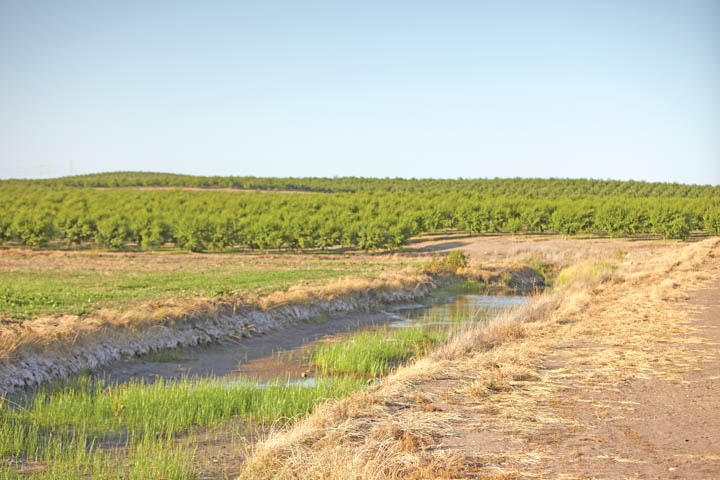
Irrigated Lands Program increases fertilizer scrutiny
The draft Long-Term Irrigated Lands Regulatory Program expands scope to include every irrigated acre of the 7 million acres of farmland in the Central Valley.Also expands legal coverage to growers for any movement of water into ground water.The biggest changes in the program for growers will be the inclusion of ground water monitoring and mitigation requirements with a focus on nitrogen fertilizers and salt.
September 29, 2010

Reaction to the proposed permanent Irrigated Lands Program is generally mixed in the farming community. On one hand, of the options initially considered, new regulations could have been much more onerous for growers who irrigate farmlands in California. At the same time, the proposed new program ushers in considerable new monitoring and mitigation requirements, particularly for growers who farm in areas prone to offsite movement, or where water quality problems are an issue.
The draft Long-Term Irrigated Lands Regulatory Program expands the scope to include every irrigated acre of the 7 million acres of farmland in the Central Valley, while also expanding the legal coverage to growers for any movement of water into ground water. A draft of the new program was released in July, followed by a public comment period that closed Sept. 27.
Ground water issues
The biggest changes in the program for growers will be the inclusion of ground water monitoring and mitigation requirements with a focus on nitrogen fertilizers and salt. Under those new requirements, growers in areas deemed high risk or known to have ground water quality issues will have to undertake efforts to reduce possible ground-water contamination.
Growers will notice other changes as well. The Central Valley Regional Board, which spearheads the program, will continue to work through water quality coalitions for monitoring and outreach. However, growers will be required to enroll directly with the Regional Board and likely pay higher fees to cover expanded regulatory costs.
Over the next four or five years, growers should expect the Regional Board to focus its limited resources for regulatory action on individual growers, especially in areas where there are known water quality problems. The 300-page draft proposes dividing the vast Central Valley region into high-risk and low-risk areas for ground and surface water quality.
Ground water protection areas
Growers in higher risk “Tier 2” zones, based on the state’s currently established Ground Water Protection Areas, should expect to comply with more intense ground water protection expectations.
Landowners in Tier 2 lands with ground water or surface water issues associated with agriculture will need to develop Farm Water Quality Management Plans. Coalitions are expected to assist members in developing the plans.
Nutrient management plans will be required under the Water Quality Management Plan where ground water is impaired in a Tier 2 area. Plans will need to be signed off by the Water Board, an agronomist or certified crop adviser (CCA).
Once the Water Board has accepted the final version of the program, requirements of the new long-term program will be phased in over three years beginning in March 2011. The addition of ground water, along with current concerns about elevated nitrates in drinking water for a number of communities in the Central Valley, will mean that growers will need to evaluate their nitrogen fertilizer applications as well as assess how to minimize downward movement.
Nitrogen use efficiency
While there will be intensified scrutiny on growers’ use of nitrogen, the good news for many almond growers is that they already are taking significant steps to optimize efficient use of nitrogen and minimize environmental impacts.
Recent results of an ABC-funded survey of California almond growers show that they are very interested in information and techniques that maximize nitrogen use efficiency while helping them meet mounting environmental standards.
An interdisciplinary nutrition project supported jointly by the Almond Board and USDA grant funds is looking for ways to further improve nitrogen use efficiency (NUE) in the orchard. Nitrogen use efficiency is calculated as the nitrogen applied compared to nitrogen removed with the crop.
The project has shown that current methods and technologies are achieving NUE of 70 percent to 80 percent in some almond orchards by using multiple applications of N applied through fertigation and timed to the development of the tree.
Soil water monitoring
It is also critical that applied irrigation volumes do not move the water below the root zone. Some of the newer soil water monitoring technologies that provide real time soil water profiles can assist in ensuring water doesn’t move below the roots.
While almonds require a good deal of nitrogen, high use efficiency means growers can do a good job matching N applications with in-season demand to greatly reduce off-target movement. The Almond Board will continue to fund research that gives growers the tools to further improve that efficiency through enhanced tissue and orchard sampling guidelines and updated information on fertilization rates and timing.
For more information on keeping inputs out of ground water, go to almondboard.com/farmpress12.
You May Also Like



